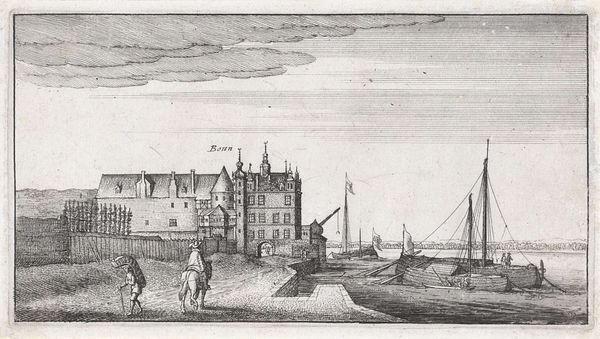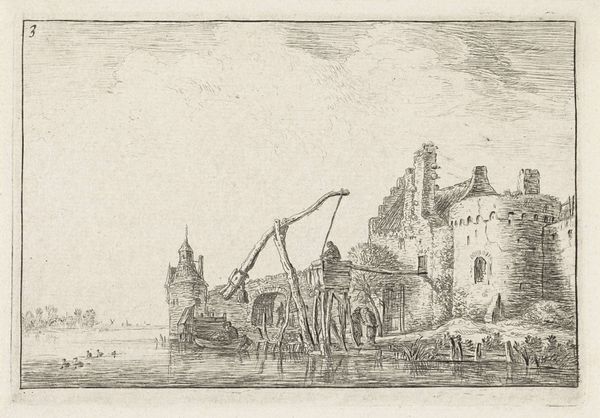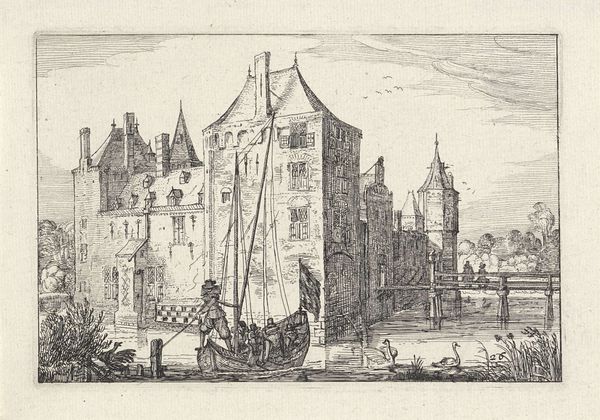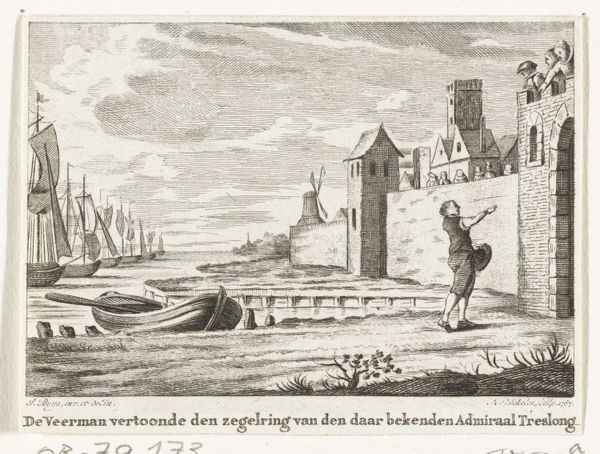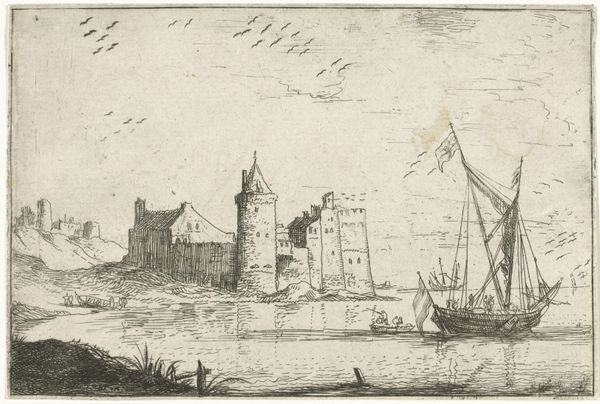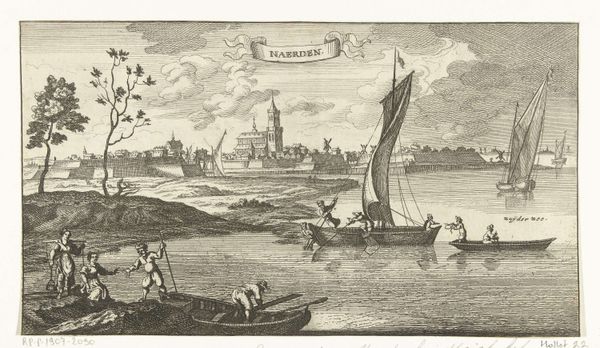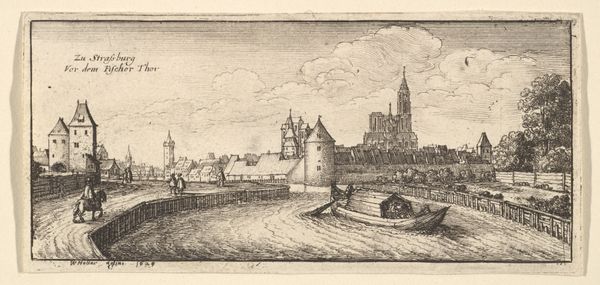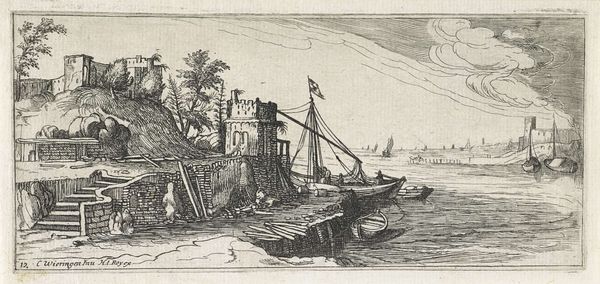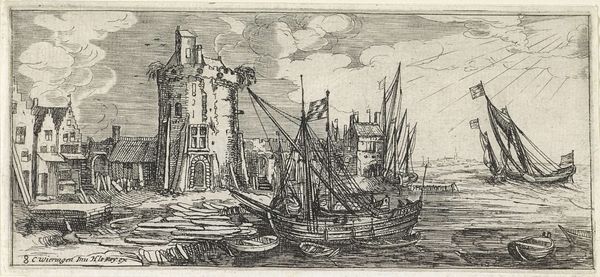
De veerman Jan Pietersz. Koppelstok toont de ring van Treslong bij de onderhandelingen voor de stadsmuur van Den Briel, 1572 1785 - 1787
0:00
0:00
drawing, ink, pen
#
drawing
#
narrative-art
#
dutch-golden-age
#
landscape
#
ink
#
pen
#
cityscape
#
genre-painting
#
history-painting
Dimensions: height 62 mm, width 89 mm
Copyright: Rijks Museum: Open Domain
Curator: Here we have Jacobus Buys’s drawing, “De veerman Jan Pietersz. Koppelstok toont de ring van Treslong bij de onderhandelingen voor de stadsmuur van Den Briel, 1572,” made between 1785 and 1787. It's currently held in the Rijksmuseum. Editor: My initial reaction is that it evokes a subdued atmosphere. The monochrome palette, rendered in pen and ink, gives it a historical gravitas. It seems like a significant moment frozen in time, but also feels distant somehow. Curator: Indeed, the restrained palette directs our focus towards the narrative. Buys uses pen and ink to describe this Dutch Golden Age moment; specifically, it depicts a local ferryman displaying a ring, proof that the rebel Treslong had captured the city to those negotiating surrender from the city walls. Editor: A ring… fascinating. The circular form often symbolizes unity, commitment, an unbroken bond. Given that this ring precipitates negotiation—a type of formalized discourse, isn’t it possible to read that object as less about literal power, but rather, about solidifying allegiance to Treslong’s cause. Curator: Certainly, its symbolic function far outweighs its monetary value here. Let’s not forget, however, that Buys crafted this drawing well after the events of 1572. By the late 18th century, these historical events became pivotal in defining Dutch national identity and resistance against foreign rule. His choice of pen and ink allowed for relatively inexpensive production. Prints and drawings could be distributed widely, reaching a broad audience and fueling patriotic sentiments in the face of political upheaval. Editor: Yes, the very act of portraying it helps cement the mythos. Look at the walls – impenetrable. But that small boat, that single figure, is there in the foreground disrupting its presumed strength. And of course, the windmill in the distance--an almost ubiquitous Dutch symbol. Those icons root us not just to a specific story, but a much wider collective cultural history. Curator: Absolutely. What's also striking is how Buys uses linear perspective to draw the viewer into the heart of the scene. Our eye travels from the foreground figure of the ferryman, back to the distant ships, to reinforce the feeling that there are tangible linkages, literal material pathways that shape political change. Editor: I leave this image pondering what continuities persist; how acts of visual storytelling continually refashion events into culturally significant objects and shape identities long after the moment depicted has faded into history. Curator: A good thought indeed. We also see here how an ostensibly simple drawing could take on complex layers of historical meaning, becoming a touchstone in broader conversations surrounding labor, social change and the ever-present potency of historical narratives.
Comments
No comments
Be the first to comment and join the conversation on the ultimate creative platform.


